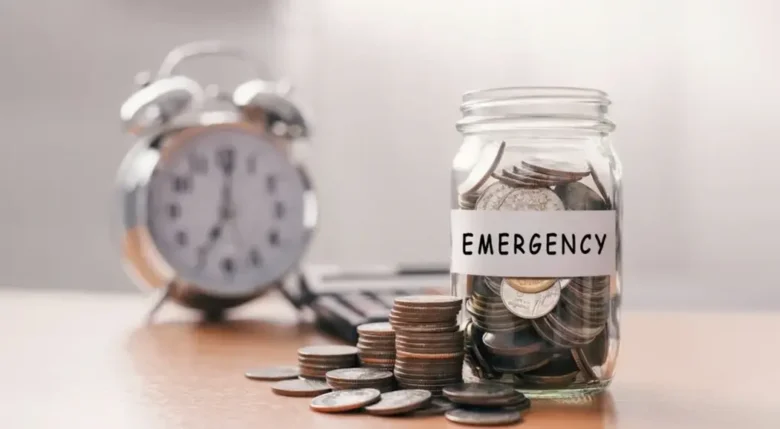Life has a way of throwing curveballs at you, and medical issues are among the most unpredictable and financially draining of all. It doesn’t matter if it’s an illness that’s sudden, a serious accident, or a surgery that is an urgent medical emergency; they not only affect your body, but they also ruin your bank account. Even when you have insurance, the expenses of deductibles, co-pays, prescriptions, and other out-of-network costs can become overwhelming.
This is where a health emergency fund can come in. It’s your own personal safety net designed to ease the shock of unexpected medical bills so that you can concentrate on healing and not stress over the cost of medical bills. Consider it an emergency financial plan. This article will discuss the reasons why having an emergency health account is crucial and what makes it different from a general savings account that is general, and how you can begin making one today, even if living paycheck-to-paycheck.
The True Cost of Medical Emergencies:
It’s easy for people to underestimate the cost of medical emergencies until you’re trapped inside the ER at 2 a.m., and you’re faced with an estimated five-figure cost. Even a simple procedure such as an appendix removal or a quick hospital stay could cost you hundreds of dollars. If your insurance plan has an expensive deductible or coverage that is limited, out-of-pocket expenses could be a major burden. Follow-up appointments, prescription medication, and physical therapy—they can add up.
According to a study conducted by the Kaiser Family Foundation, more than 40 percent of Americans have to pay a medical bill of $500 without borrowing money or entering debt. This is enough to show the reason why having a healthcare emergency account can’t be something to be enjoyed, but a financial necessity. It’s not a good idea to wait until the moment of crisis; it isn’t the best moment to begin thinking about finances. Making plans ahead gives you the ability to make clear, sensible decisions amid chaos.
Why Your General Emergency Fund Isn’t Enough:
You may own an emergency account to cover things such as car repairs or job loss, but medical emergencies should have their own section. Why? Because they typically require quick access to large amounts of money. Additionally, they may have continuous costs that are ongoing for several months. Combining medical expenses with your emergency fund could quickly drain your reserve, which can leave you unprepared for other emergencies.
In addition, the emotional pressure caused by a health issue can affect your judgment in managing your money. A separate savings account for medical expenses provides clarity, structure, and peace of mind. It also promotes discipline and a better financial plan. It’s not like you’d use your food budget to repair your roof. So why should you treat medical emergencies the same way as other unexpected expenses?
How Much Should You Save in a Health Emergency Fund?
There’s no standard solution to this question, but an ideal starting point is to set a goal of at least $1,000 when you’re only beginning. In the ideal scenario, you should try to save the amount of your insurance’s deductible, plus several months’ worth of your out-of-pocket maximums. For instance, if the deductible for you is $3,000 while your out-of-pocket maximum is $7,000, then try setting the goal to save between $5,000 and $10,000 over the course of time.
It might sound like a lot, but you don’t have to pay it all off in one go. A small amount of consistent savings can get you there quicker than you imagine. Take into consideration your health history and your family’s needs. If you suffer from an ongoing condition or depend on others, you may need to save more. It’s not the goal to achieve the perfect state overnight, but rather to build an affordable, long-term cushion that is suited to your needs.
Simple Steps to Start Your Health Emergency Fund Today:
Beginning is often difficult; however, it doesn’t need to be difficult. Start by opening a new high-yield savings account that is devoted to medical bills. Automate a small withdrawal every payday. Even small amounts, like small amounts of $25 or $10, can change the way you spend your money throughout. Cut down on some of your non-essential expenditures, like dining out or subscriptions, and transfer the money towards your savings for health.
Utilize windfalls such as bonuses, tax refunds, or cash rewards to give your budget an extra boost. Monitor your progress using a plan chart or budgeting application to keep yourself motivated. Don’t wait for the optimal time to begin; start by using what you have today. The future won’t come until you’re financially prepared for an emergency, so getting started today is the most vital action you can take.
Where to Keep Your Health Emergency Fund:
The money you want to keep should be easily accessible but not so easy to use for everyday expenses. Savings accounts with high yields are generally the best choice, as they offer more interest than traditional savings accounts; however, they allow you to access your money in the event of an emergency. Do not invest the funds in the market or put them into CDs because you may need cash in a hurry, and you don’t want to lose value.
You could consider naming the account with a specific name like “Health Fund” to mentally make it clear what it’s for. If you’re eligible for it, you may be eligible for a Health Savings Account (HSA), which could be a great instrument for this purpose and offers tax benefits in addition to the flexibility. Be sure to be aware of the rules and restrictions associated with it. The main point is that this money must be secure and stable. It must be available when you need it.
Conclusion:
An emergency health fund isn’t only about money; it’s about peace of mind as well as control and resilience. In the current climate, where medical costs are rising and emergencies can strike at any time, having a savings plan for health-related expenses is among the most effective decisions you can make. It helps you stay out of your debt cycle and enables you to focus on the recovery process, not just the receipts. By preparing ahead, setting achievable goals, and constructing your financial plan incrementally, it’s not just about making plans for the worst but also securing your future. The ideal time to begin is now, regardless of the size of the sum. Your health is a priceless asset; however, your financial security shouldn’t be at the expense of it.
FAQs:
1. Can I make use of a Health Savings Account (HSA) to fund my health emergency fund?
Yes, if you’re part of the high-deductible health insurance plan, having an HSA is an excellent alternative. It allows tax-free savings and is able to be used for many medical expenses.
2. What’s the difference between a common emergency account and a health emergency fund?
A general emergency fund can cover all kinds of unexpected expenses; however, the healthcare emergency fund has been dedicated to medical costs in order to prevent the depletion of other savings.
3. How do I create a health emergency fund while on an extremely tight budget?
Start by automating transfers, reducing little-used luxury items, and redirecting tax bonuses or refunds. The importance of consistency is greater in comparison to the money you can save.
4. Where should I put my health emergency fund to allow quick access?
A high-yield savings account is the best choice. It’s safe, it has a high rate of interest, and it gives rapid access if needed.
5. What kind of expenses should I utilize my health emergency savings account for?
Use it to pay for medical emergencies such as ER visits or urgent care, surgeries or specialist charges, or prescriptions, as well as any medical-related costs that are not insured by your insurance.




